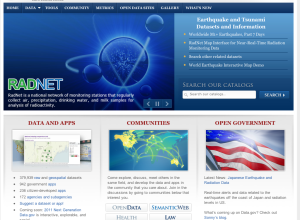Kevin Slavin, chairman and co-founder of Area/Code, describes how algorithms (processing tons and…
Statistics
More than mean, median, and mode.
-
How algorithms shape our world
-
Statistics has a new name
Simon Rogers, for The Guardian, outlines the new, hot trend on the block…
-
Undergraduate grade inflation
It’s a given that some colleges and programs give more A’s than others,…
-
Data Without Borders
Data is everywhere, but use of data is not. So many of our…
-
Most common iPhone passcodes
Some people use a passcode on their iPhones simply to prevent their kids…
-
Analysis of passwords in Sony security breach
A little over a week ago, Sony was hit yet again with another…
-
Pew Research raw survey data now available
The Pew Research churns out a lot of interesting results from a number…
-
Open thread: Can you spot the wrongness in this tax graph?
The argument behind this graph in The Wall Street Journal is that the…
-
Plush statistical distribution pillows
For the statistical nerd in you or for the child you are raising…
-
Charts about sex
OkCupid adds another report to their growing list of analyses on relationships. This…
-
Map your location – that your iPhone secretly records
Researchers Alasdair Allan and Pete Warden have found that the iPhone records cell…
-
Recession and rise in antidepressant prescriptions
Over the past four years there was a 43 percent increase in prescriptions…
-
Thoughts on end of Data.gov
In a guest post for the guardian.co.uk Datablog, I thought out loud about…
-
Data.gov and other transparency sites to be shut down due to budget cuts
Last week, there were rumblings over the end of the Statistical Abstract, and…
-
Tell-all telephone reveals politician’s life
Not many people understand the importance of data privacy. They don’t get out…
-
Think Quarterly from Google UK on data
“The problem isn’t that specialised companies lack the data they need, it’s that…
-
The Like Log Study: Buzzwords and engagement
The Web is a game of pageviews, and outlets such as Twitter and…
-
Why sports statisticians should be more involved in games
Hot off the MIT Sloan Sports Analytics Conference, Sean Gregory argues for more…
-
Test your Rock-Paper-Scissors strategy against the machine
We learned the strategy to win Rock-Paper-Scissors every time, but does it really…
-
Lots of health data released via Health Indicators Warehouse
The government has been making a big push for more open health-related data,…



















 Visualize This: The FlowingData Guide to Design, Visualization, and Statistics (2nd Edition)
Visualize This: The FlowingData Guide to Design, Visualization, and Statistics (2nd Edition)










